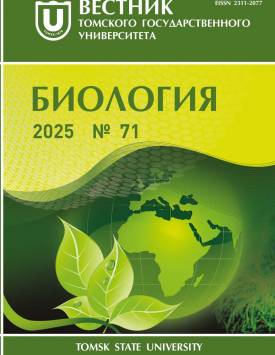The first finding of nesting of the European Bee-eater Merops apiaster Linnaeus, 1758 in the Tomsk Oblast (Western Siberia)
In recent decades, a trend towards expansion of the range of steppe and forest-steppe bird species to the north has been observed in the Trans-Urals and Siberia. In this report we confirm a new fact of nesting of the steppe species, the European Beeeater Merops apiaster Linnaeus, 1758 in the south of the Tomsk region - in the subtaiga zone. We found only one nest visited by bee-eaters (see Figs. 1 and 2 in the Supplement). It was located in a mixed colony of two species of sand martins of the genus Riparia - Sand Martin Riparia riparia and Pale Sand Martin R. diluta. On August 1, 2025, there were 2 half-fledged chicks in the nest and about 10 young birds were already flying. It is impossible to say whether these flying birds were chicks from only this nest or another one, since many sand martin nests were already empty. This find is the northernmost of those known in Western Siberia. The coordinates of the find are 56°19'22.63"N, 84°55'22.84"E - this is 140 km north of the known nesting sites in latitude. This changes its status from a vagrant species to a nesting one in the Tomsk Oblast and continues the trend of expanding the range of southern species to the north. One of the reasons for this may be global warming. The article contains 1 Supplement, 9 References. The Authors declare no conflict of interest.
Keywords
subtaiga zone, avifauna, colonies, expansion of range, climate warmingAuthors
| Name | Organization | |
| Korobitsyn Igor G. | Tomsk State University | rozenpom@mail.ru |
| Mileshkina Maria T. | Tomsk State University | marymileshkina@gmail.com |
References

The first finding of nesting of the European Bee-eater Merops apiaster Linnaeus, 1758 in the Tomsk Oblast (Western Siberia) | Vestnik Tomskogo gosudarstvennogo universiteta. Biologiya - Tomsk State University Journal of Biology. 2025. № 71. DOI: 10.17223/19988591/71/14
